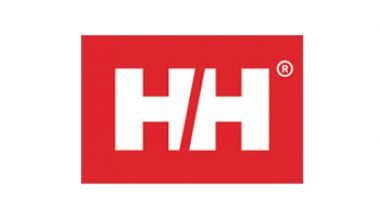Skier Essentials
FORM THE FOUNDATION
The focus remains on the discovery of skiing and fun while consolidating the fundamental technical skiing skills in fun structured and unstructured environments.
During this stage, a skier’s coordination of movement will be inconsistent in a variety of on-snow environments. As skiers gain strength and confidence in their skiing skills, their technical skiing skill execution will become more consistent and appear to be seamless regardless of the environment.
Skiers demonstrate outside ski pressure throughout the turn and become aware of the ski reactions on the snow through the maintenance of an excellent athletic ready position on skis while carving.
Skiers are encouraged to explore the mountain by skiing through a variety of terrain and snow conditions to challenge themselves along with beginning to compete in interclub and local competitions.
- Boys 6-9
- Girls 6-8
- Snow Stars 1-5
- Club Level
- Local Club and Inter-club skill events
Technical Focus
Encourage skiers to feel the front tongue of their boot to create shin pressure by flexing both ankles while keeping their hip and hand position forward with their knees driving towards the ski tips allowing them to effectively carve cleanly on the outside ski.
Skiers demonstrate outside ski pressure throughout the turn and become aware of the skis orientation on the snow through the maintenance of a good athletic ready position on skis while carving.
- Ankle flexion and shin pressure with knees driving towards the ski tips.
- Parallel skis with hip to shoulder width stance. Everything is inline including the ski tips, bindings, knees.
- Hips are perpendicular to the skis.
- Body movement between turns and over terrain is forward and up, moving with the skis through transitions.
- Skiers are becoming more proficient at weight transfer between symmetrical turns to enable the skier to carve on the outside ski.
- Skiers experiment with different edge angles on the steep and flat terrain.
- Upper body should remain stable and quiet.
- Proper upper and lower body separation is used to direct forces to the outside ski resulting in a stable platform.
Pole plant timing and coordination will become more consolidated and disciplined.
Skiers learn to control and generate speed through the use of different turn shapes, short and long radius turns, on all types of terrain.
Skiers should practice carving turns outside ski to outside ski and one ski skiing to begin consolidating the fundamental skiing skill of carving a turn with the proper upper and lower body separation and forward body position on the ski through the use of ankle flexion to promote the establishment of a platform utilized to apply force to the ski.
Skiers perform technical free ski skills with control and rhythm on stable snow conditions before adding variation in different environments. Changing one variable from one run to another adds contrast and allows drill repetition without repeating.
Introduce skiers to the speed elements of tucking and gliding along with jumping over natural terrain and small terrain park and ski cross features.
Skiers should participate in Snow Stars Level 1 - 5.
EXPLORE! PLAY ALL OVER THE MOUNTAIN!
IN THE WINTER MONTHS, SKIERS SHOULD STRIVE TO ATTAIN A MINIMUM 40+ DAYS ON SNOW BY PARTICIPATING IN AN INTRODUCTORY STRUCTURED SKI PROGRAM AND SKI WITH PARENTS AS OFTEN AS POSSIBLE TO INCREASE MILEAGE.
Tactical Focus
- Have fun while skiing and gaining confidence in their fundamental skiing skills by practicing short and long radius turns on a GS sidecut ski.
- Skiers are encouraged to be challenged to use the whole mountain and explore all available terrain features.
- Remind young skiers to look ahead at all times.
- Make the whole run count every time; when setting drill courses, set multiple drill environments on one trail if possible.
- Set courses through rolling terrain features to promote self-discovery of movement over terrain with short and long radius turns.
- Introduce a few simple ski racing rules.
- Change training venues as often as possible to add variation and fun!
Skiers should be encouraged to train in a variety of environments including:
- In-house "mini competition" or skills events.
- Dual "head to head" events.
- GS/SL courses (panels, brushes, stubby gates).
- Rhythmical and arrhythmical GS courses.
- Kinder Kombi Ski Cross in a variety of terrain environments, courses should include a simple spine feature.
- Brush courses through small rollers or waves.
- Ski moguls and off-piste terrain.
- Speed trap training & mini-competitions
- Train with little to no inspection, less than 10 minutes.
- Aim to complete as many runs as possible each training session.
Focus on versatility and the competitive play elements of the Snow Stars program.
- Athletes practice turn shape, looking ahead, and the control and generation of speed through simple "lead/follow" drills in the free ski environment.
- Ski side-hills, through gullies, rollers, and small terrain park features to continue the development of athleticism and physical literacy.
- Introduce Ski Cross, "mini" terrain park features, with small ramp angles.
Skiers should be introduced to proper starting technique with small start ramp angles to provide skating and poling coordination practice. Race to the first gate!
By the end of the Skier Essentials stage, performance is beginning to become more consistent in various demanding environments; athletes are starting to become more adaptable in a variety of tactical situations
IN THE WINTER MONTHS, SKIERS SHOULD STRIVE TO ATTAIN A MINIMUM 40+ DAYS ON SNOW BY PARTICIPATING IN AN INTRODUCTORY STRUCTURED SKI PROGRAM AND SKI WITH PARENTS AS OFTEN AS POSSIBLE TO INCREASE MILEAGE.
Snow Stars Level 1
PDF: The Controlled Skier
Snow Stars Level 2
PDF: The Parallel Skier
Snow Stars Level 3
PDF: The Mobile Skier
Snow Stars Level 4
PDF: The Dynamic Skier
Snow Stars Level 5
PDF: The Versatile Skier


